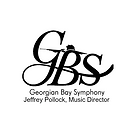Feb 11 Concert Program Notes
- georgianbaysymphony
- Feb 8, 2017
- 3 min read
W. A. Mozart (1756-1791) In 1775 at the age of 19 Mozart, over the course of nine months, composed five concertos for violin and orchestra. The fifth and last of the composer’s violin concertos serves as a fine summation of what he achieved in the genre. Although known as a keyboard virtuoso he was also very adept playing string instruments. He was taught violin by his father, Leopold, whose violin treatise, Treatise on the Fundamental Principles of Violin Playing, was used as a teaching tool into the early nineteenth century. Mozart was court violinist and then concertmaster in Salzburg.
Following the very vigorous orchestral paragraph that begins the Concerto for Violin No. 5, the solo violin seems to stroll into the proceedings in an incongruously relaxed manner. Mozart offers other surprises in the form of unexpected harmonies and little bits of melody that sound briefly, then give way to others. Here and in the slow movement that follows, Mozart provides opportunity for a cadenza, a quasi-improvisational solo for the featured performer. The finale begins as a dance in lilting triple-pulse meter.

Ludwig van Beethoven (1770-1827) 1812—Drei Equale for 4 trombones was written in 1812 as a commission for Kappelmeister Glöggl of the Linz Austria cathedral. There has been some controversy over the type of horns intended for this piece. Glöggl’s son, who later becomes a music publisher in Vienna, verifies that “alto, tenor and bass are the instruments commonly in use.” He continues, “Beethoven wanted to hear an Aequale such as was played at funerals in Linz, and one afternoon when Beethoven was expected to dine with us, my father appointed three trombone players and had them play an Aequale as desired…” An Aequale was a piece of music played for funerals and usually consisted of equal parts for horns. The trombone was associated with death , angels and the judgement of God.
G. Faure(1845-1924) The Pavane was a sixteenth- and seventeenth-century court dance of Italian origin, in duple meter, and stately in tempo and spirit. Fauré wrote the Pavane in 1886 with pleasure (“This is the amusing aspect of my art”), particularly when he compared the experience with his unsuccessful struggle to write a symphony.
The piece was originally conceived for orchestra alone. However several patrons convinced Faure to add a chorus. Pavane found its way to the stage in 1919, when Fauré incorporated it into a one-act divertissement for the Monte Carlo Opera. It is as a concert piece that the Pavane has made its gentle mark, and probably most often in its wordless version. That, by the way, is simply the choral version with the voices left out: No other adjustment is needed
Antonin Dvorak (1841-1904) In 1877, Dvorak applied for the renewal of an Austrian state grant that he had received two years prior. Johannes Brahms, a committee member, was so impressed by Dvořák's candidacy, that he went to his own music publisher Simrock and persuaded the firm to work with the young Czech composer. Dvorak's response was his first set of Slavonic Dances, Op. 46. Though he had already composed five symphonies to date, this set of dances launched him into fame. Given their success, Simrock asked for more. These two collections of dances were the first examples of the nationalistic musical style that became an inseparable part of Dvorak's musical reputation.
The Slavonic Dances are robust and colorful, driven by the rhythmic patterns and features of traditional Czech folk dances. Each dance consists of several folk-like melodies of contrasting characters, keys, and tempos. Slavonic Dance No. 1, is a highly spirited and cheerful Furiant (a spirited Bohemian dance tune in 3/4 time), but is filled with cross-rhythms throughout that suggest duple time—an important feature of the dance.
Maurice Ravel (1875–1937) The Bolero, commissioned as a ballet, premiered on 22 November 1928 in Paris. It was met with immediate critical acclaim. Ravel himself did not think much of it:
It constitutes an experiment in a very special and limited direction, and should not be suspected of aiming at achieving anything different from, or anything more than, it actually does achieve. Before its first performance, I issued a warning to the effect that what I had written was a piece lasting seventeen minutes and consisting wholly of "orchestral tissue without music" — of one very long, gradual crescendo. There are no contrasts, and practically no invention except the plan and the manner of execution. --The Daily Telegraph in July 1931.
The Bolero is one of the most recognized classical pieces in pop culture. The Bolero’s inclusion in the 1979 movie 10, starring Bo Derek, significantly increased recording sales.
British ice-dance champions Torvill and Dean won a Gold medal with their powerful performance, skating to Ravel’s Bolero at the 1984 Winter Olympics in Sarajevo.
Rock legend Frank Zappa admired the piece so much that he had an arrangement made to play during his 1988 World Tour.




















Comments